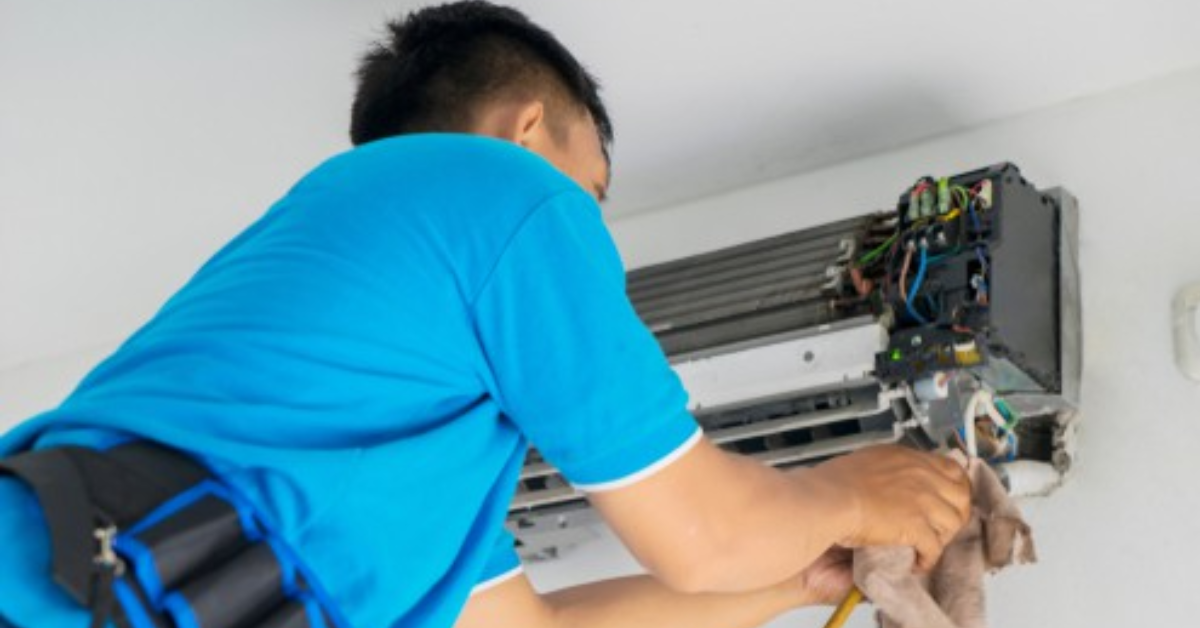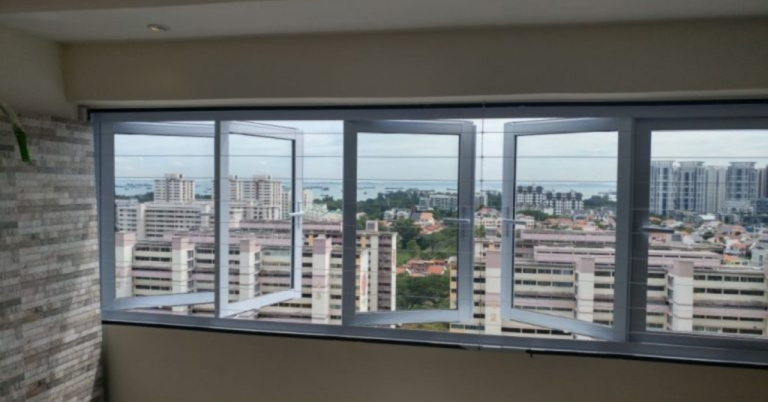The Critical Role of Aircon Repair in Today’s Comfort-Driven World
In the sweltering heat of summer or the stifling humidity of tropical climates, a malfunctioning cooling system is more than just an annoyance — it can disrupt comfort, productivity, and even well-being. That’s why Aircon Repair is an indispensable service for both residential and commercial setups. Whether it’s a minor refrigerant leak, a faulty compressor, clogged filters, or a system-wide failure, timely and professional repair ensures that your air conditioner performs optimally, extends its lifespan, and avoids energy inefficiencies that hike up your bills. In this article, we explore all you need to know about aircon repair — from common issues and the repair process to choosing a reliable service provider and best practices in maintenance.
Understanding Why Aircon Repair Matters
1 Ensuring Comfort & Health
When an air-conditioning system underperforms or breaks down, indoor temperatures can escalate rapidly. In hot climates especially, that leads to discomfort and even heat stress for occupants. Moreover, a damaged aircon can lead to poor indoor air quality: mold, bacteria, or dust accumulation may proliferate in parts like coils and filters, exacerbating allergies or respiratory issues.
2 Energy Efficiency and Cost Savings
An air-conditioning unit that is malfunctioning or partially broken often works harder to compensate — drawing more electricity, running longer cycles, or turning on and off too frequently. Over time, this inefficiency can significantly increase monthly electricity bills. A timely aircon repair helps restore the intended energy consumption, saving you money.
3 Preventing Further Damage
Small problems, left unattended, tend to escalate. What begins as a minor refrigerant leak or worn-out fan motor can cascade into a compressor failure, burnt wiring, or mechanical breakdown. Repairing early often means lower costs compared to major component replacement.
4 Prolonging System Lifetime
Air-conditioning systems are major investments. Regular upkeep and timely repairs help maintain performance, slow down wear and tear, and push back the need for full replacement. Thus, repair becomes a form of insurance for your unit’s longevity.
Common Air-Conditioning Issues That Require Repair
Before selecting a repair service, it’s good to know the typical faults your system may encounter. Some of the most frequent aircon problems include:
1 Refrigerant Leaks or Low Refrigerant Levels
Loss of refrigerant leads to poor cooling, ice formation on coils, or high operating pressures on the system.
2 Faulty Compressor or Motor Failures
The compressor is the heart of the cooling cycle. If it fails, the aircon cannot condition air. Also, fan motors (indoor or outdoor) may burn out or have mechanical blockage.
3 Blocked or Dirty Filters, Coils, or Drain Lines
Dust, debris, and biological growth can clog filters and evaporator or condenser coils, reducing airflow and cooling efficiency. Drain pipe blockage can cause water leakage or overflow.
4 Electrical Failures and Control Board Issues
Wiring faults, capacitor failure, sensor problems, or faulty control boards often cause system shutdowns or erratic behavior.
5 Unusual Sounds, Vibration or Odor
Rattling, buzzing, hissing, or grinding noises often point to mechanical faults, loose parts, or obstructions. Foul smells may indicate mold or bacterial growth in the system.
The Aircon Repair Process: What to Expect
When a professional technician arrives for aircon repair, here’s generally how the process unfolds:
1 Initial Diagnostics & Inspection
The technician will power up the system, monitor pressures, electrical readings, airflows, and control functions. They’ll inspect filters, coils, lines, and look for visible leaks or damage.
2 Fault Identification & Reporting
Based on readings and visual checks, the technician pinpoints the underlying issues (for instance, a broken capacitor or a copper refrigerant line leak). They will then explain what went wrong, offer repair options, and provide a quotation for parts and labor.
3 Repair or Replacement of Faulty Components
Once agreed, the technician proceeds to repair or replace components—be it coils, fans, wiring, sensors, compressors, or recharge of refrigerant. They’ll observe manufacturer guidelines and use compatible parts.
4 System Testing & Validation
After repair, the technician runs the system through test cycles, monitors performance, checks for leaks, ensures proper cooling capacity, stabilizes pressures, and ensures safe electrical operation.
5 Cleanup & Customer Walkthrough
A reliable service includes cleaning up work areas and showing you what was done. They also share tips for usage and how to detect early signs of trouble.
How to Choose a Reliable Aircon Repair Service
Given the complexity and safety aspects of air-conditioning systems, choosing the right repair service is critical. Here are key criteria to consider:
1 Certifications and Technician Training
Ensure the provider employs licensed, trained technicians who understand refrigerants, electrical systems, and safety protocols. Relevant certifications (e.g. HVAC, refrigeration certificates) are a plus.
2 Transparent Quotation and Pricing
A trustworthy service will provide upfront estimates, break down costs of parts vs labor, and avoid hidden charges. Always compare quotes from multiple providers.
3 Emergency / 24-Hour Support
Since aircon breakdowns often occur at inconvenient times, access to a 24/7 or emergency service is valuable for rapid response and comfort restoration.
4 Warranty or Guarantee for Repairs
A service that offers a warranty (e.g. 30-90 days) on their work shows confidence in their workmanship and helps protect you against recurring faults.
5 Good Reviews and Reputation
Check references, online reviews, and ask for customer testimonials. Word-of-mouth and past performance are strong indicators of reliability.
6 Use of Genuine Parts
Counterfeit or low-quality replacement parts may fail prematurely. Reputable companies use OEM or certified parts that match system specifications.
Example: 24-Hour Aircon Repair Service (Illustrative)
To illustrate how an around-the-clock repair service works, consider a scenario where a household’s aircon fails late at night. A 24-hour aircon repair provider dispatches a technician immediately, performs diagnostics, identifies a compressor fault, replaces it (if spare part is available or stocks brought in), tests the system, and restores cooling before dawn.
Such services emphasize speed, reliability, and round-the-clock access. They prevent discomfort from prolonged indoor heat and stop smaller issues from worsening overnight.
Costs and Factors Influencing Repair Price
Repair costs can vary widely depending on:
-
The complexity of the fault (electrical vs mechanical)
-
The make, model, and age of the aircon unit
-
Cost of replacement parts (compressors, circuit boards, sensors)
-
Labor charges (which may increase for emergency, night or holiday services)
-
Travel distance or accessibility of the unit
Minor repairs (e.g. replacing sensors, cleaning filters, minor welding) tend to be modest in cost, while major parts replacement or refrigerant top-up can push costs higher. Always seek a transparent breakdown in your quote.
Maintenance Tips to Minimize Repair Needs
Preventive care reduces the frequency and severity of repairs. Here are some best practices:
-
Quarterly or Biannual Servicing — Clean filters, coils, and check electrical connections.
-
Monthly Filter Checks — Replace or clean filters to maintain airflow.
-
Keep Outdoor Units Free from Debris — Trim vegetation, remove leaves, avoid obstruction.
-
Check Drainage Lines — Flush drain pipe to avoid blockage and water leaks.
-
Operate Moderately — Avoid frequent on/off cycling; use thermostat settings appropriately.
-
Monitor for Unusual Sounds, Smells or Performance Drift — Early detection leads to easier and cheaper fixes.
-
Seasonal Deep Cleaning — At least once a year, do a chemical wash of coils and deeper system checks.
When to Consider Full System Replacement Rather Than Repair
While repair is almost always the first choice, there are cases where replacement makes more sense:
-
The unit is very old (10–15+ years) and parts are no longer readily available.
-
Multiple major components fail in succession (compressor, circuit board, motors).
-
Energy inefficiency is excessive even after repair—replacement may save more in long run.
-
Frequent breakdowns lead to recurring costs greater than a new system would cost.
-
Your usage or cooling needs have changed, so a larger or more efficient unit is optimal.
If you’re in this situation, consult with technicians who can assess return-on-investment for repair vs replacement and guide you toward the best choice.
The Future of Air-Conditioning Repair: Technology, IoT & Smart Systems
The air-conditioning industry is evolving rapidly. Key trends influencing repair and maintenance include:
-
IoT-enabled diagnostics — Smart units that self-detect malfunctions and alert users or service providers.
-
Remote monitoring and predictive maintenance — Cloud analytics can predict component failure before breakdown and dispatch repairs proactively.
-
More eco-friendly refrigerants and system designs — As regulations tighten on older refrigerants, repair services must adapt to newer, greener alternatives.
-
Modular systems and smart HVAC integration — Repairs must now consider integration with home automation platforms, zoning systems, and energy management.
These innovations aim to reduce downtime, improve energy efficiency, and shift repair from reactive to proactive.
Conclusion
Aircon repair plays a pivotal role in maintaining indoor comfort, preserving system lifespan, and preventing energy wastage. From diagnosing complex electrical faults to replacing mechanical parts or simply cleaning filters, a skilled and responsive repair service is invaluable. When choosing a service provider, look for training credentials, transparency, emergency availability, warranties, and genuine part usage. Complement that with regular maintenance, and your cooling system can serve reliably for years. And in cases where repair is no longer cost-effective, a strategic replacement may deliver better value in the long run.
Whether your system suffers a late-night breakdown or gradually loses efficiency, don’t ignore the signs. Prompt professional intervention can mean the difference between a quick fix and a costly overhaul.







